2021 Award Winners
“Less is more” was a phrase heard often during the judging of the 2021 Kitchen & Bath Design Awards, sponsored by Kitchen & Bath Design News. Six of the industry’s leading professionals gathered to assess the entries, and while all were struck by the beauty of the entries, they gravitated toward the designs that were streamlined, well thought-out and didn’t try to do too much within the space.
The right details were also key to the winning designs. Clever storage tucked into niches, paneled appliances that deliver a more cohesive look and exceptional cabinets, lighting and hardware were among the elements that elevated the leading entries.
The best of design is what is being celebrated in the 33 spaces that have been named winners of the 2021 Kitchen & Bath Design Awards. Over 200 projects were judged in 11 categories: Best Kitchen Over $225,000; Best Kitchen $150,000-$225,000; Best Kitchen $75,000-$150,000; Best Kitchen Under $75,000; Best Specialty Kitchen; Best Master Bath Over $100,000; Best Master Bath $50,000-$100,000; Best Master Bath Under $50,000; Best Powder Room; Best Showroom, and Best Specialty Project.
The prestigious judging panel for the awards included:
• Peter Cardamone, Bluebell Kitchens, Wayne, PA
• Laura Giampaolo, Nu-Way Kitchen & Bath, Utica, MI
• Laurie Haefele, Haefele Design, Santa Monica, CA
• Sarah Kahn Turner, Jennifer Gilmer Kitchen & Bath, Chevy Chase, MD
• Linda Larisch, CMKBD, DESIGNfirst Builders, Itasca, IL
• Doug Walter, CMKBD, Doug Walter Architects, Denver, CO
Each of the projects was evaluated on multiple points, including: aesthetic appeal, functionality of the space, attention to detail, handling of unusual situations, originality, selection of colors and finishes, and overall impression. The judges also provided design feedback to all of the entrants.
The judging panel was pleased to see a departure from the ever-popular white and gray cabinets. “I actually loved the moody, dark, really dramatic kitchens, and the winners were the ones that had the dark and moody feel in contrast to the light,” stated Haefele. She noted the added use of natural woods, “which have a lot of warmth. Black kitchens have been around for a while, but integrating the lighter wood makes them less stark and more warm.”
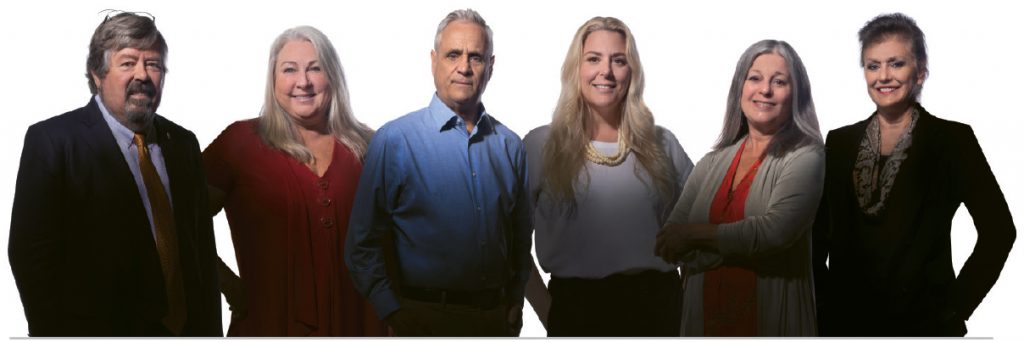
“There was a ton of black mixed with naturals,” concurred Giampaolo, along with stone features. “It was very organic, with a lot of warm tones.”
“We saw a lot of moody tones, darker woods, the use of metals and metal paints,” added Kahn Turner. She noted that, while there were still several classic light and bright kitchens, the painted finishes were grays and mushroom tones – a softer, wispy palette.
Walter said that, while white is not dead, there were many shades of off white included. “Darker colors were very popular this year – dark green, navy in particular, and black,” he observed.
Larisch also noted additional combinations going on beyond the dark and light cabinets. “We saw mixtures of gloss and matte finishes, different pops of color, large windows with dark interiors, and different styles for hoods,” she offered.
But, she continued, “I just kept saying ‘less is more.’ Some designers tried to mix too many materials together and they just didn’t pull it off, versus other mixed materials that blended and seemed timeless.”
KEEPING IT SIMPLE
While Cardamone advocated for taking chances with design to stand out from the pack, he also stressed the importance of keeping things streamlined. “There’s a tendency to crowd an element like a tall refrigerator or place a wall oven next to a cooktop, with a hood squished in there. Instead, you should
let everything have room to breathe,” he stated.
“I’m excited to see people really embracing and stretching some of the cabinetry away from hoods and other things,” noted Kahn Turner. “Windows also give rooms a little more breathing space.” She notes the best designs “don’t try to cram as much cabinetry as possible into a small space, which can sometimes feel disjointed and a little heavy.”
Giampaolo agreed, noting that a few of the designs came across as forced, “like they were trying so hard to use the freestanding tub in the bath when there was no room for it. The designs that came off the best may not have had the most materials in them, but they were done correctly. They were sized, they were comfortable,” she explained.
IN THE DETAILS
“What separates a good project from a great project is attention to detail,” Walter stressed. He added that, sometimes, the judging between first and second place is so close, and what can make the difference is some small details. He was especially impressed by the dramatic hoods he saw, and the clever use of the sixth wall – the ceiling.
“I think we saw the cream rise to the top in the subtle details – the fit and finish,” concurred Kahn Turner. “Designers need to pay attention to the little things, such as pulling a cabinet panel forward so that it flushes out with the door, making sure that you have clearances, that your cabinets aren’t too spindly looking and narrow.”
The kitchens that stood out to Giampaolo were those that paid attention to unique details – finding usable space in otherwise unusable areas. “Some of the concepts with the hidden wine cubbies were amazing,” she offered.
“The ones that were outstanding were the ones that were unique and cohesive. They used textured walls. They used hidden storage units. They delivered multi-use designs, blending with the room next to it, making an entire space that you could eat, you could entertain, you could work, you could cook, you could do homework,” she added.
Haefele noted that, when first looking at an image, she knew instinctively when she liked it. “It’s when you really get into the details of the design that you can see why you liked it, that it’s so well thought out,” she reported.
Larisch stressed that the details need to be well thought out to make them work within the design, however. “The details need to make sense. You don’t want ones that are just randomly thrown in or had no thought process behind them,” she remarked. “You also need to take care of the details throughout the space and not miss an area. Every single part of that kitchen or bath should work cohesively through each turn.”
On pages 48-73, KBDN shares expanded coverage of the winning projects in the sixth annual competition. For more photos of this year’s winners, as well as insights from the panel of judges, visit www.KitchenBathDesign.com. 
VIEW ALL 2021 KITCHEN & BATH DESIGN AWARDS WINNERS
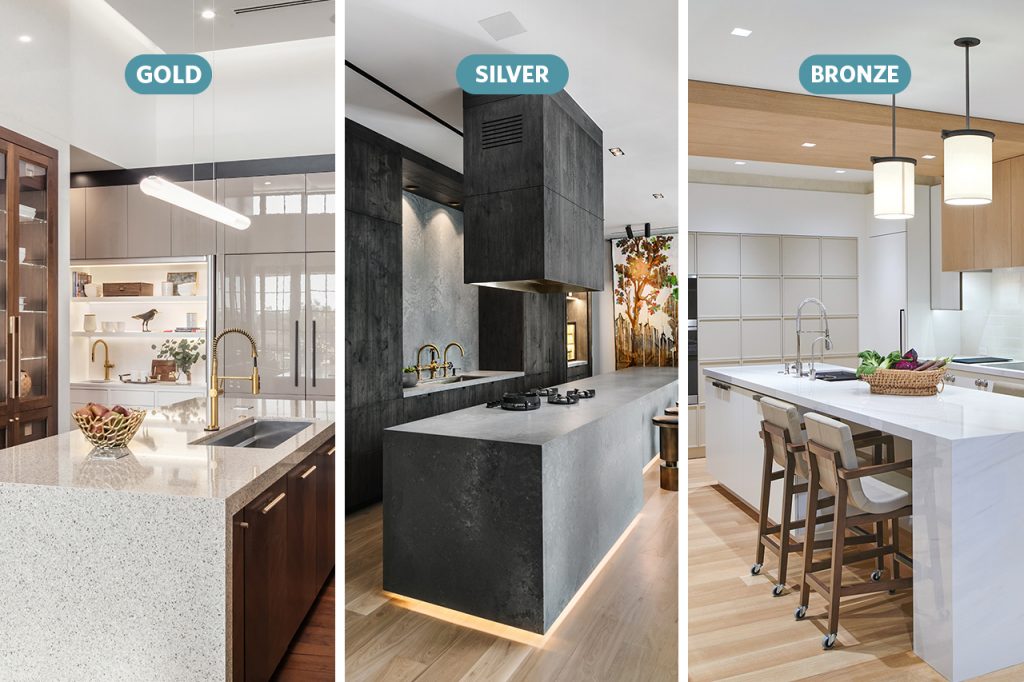
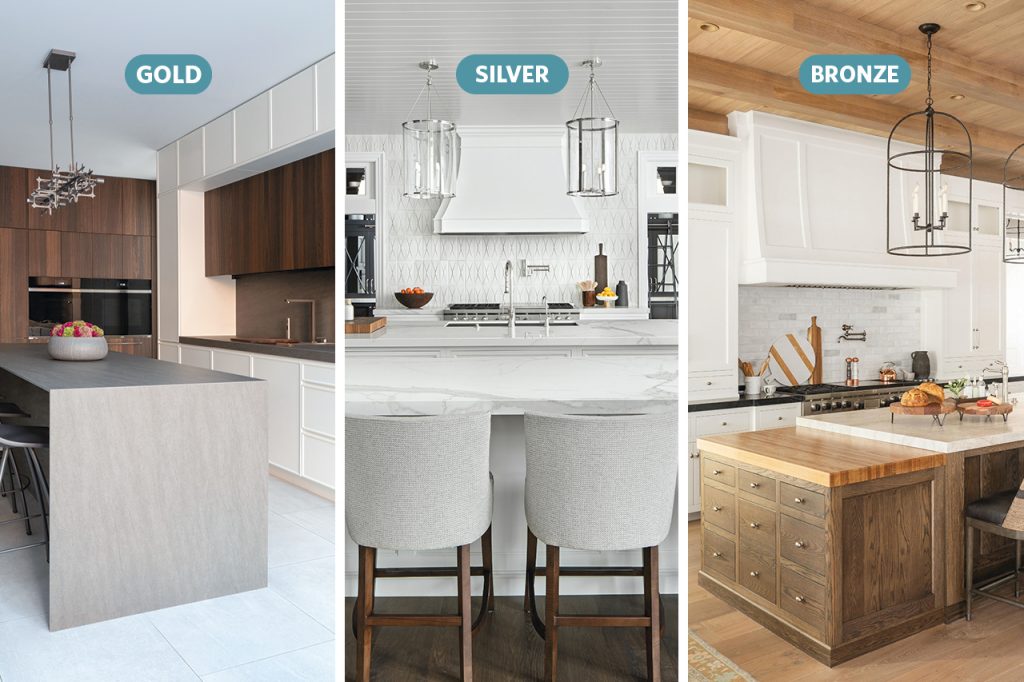
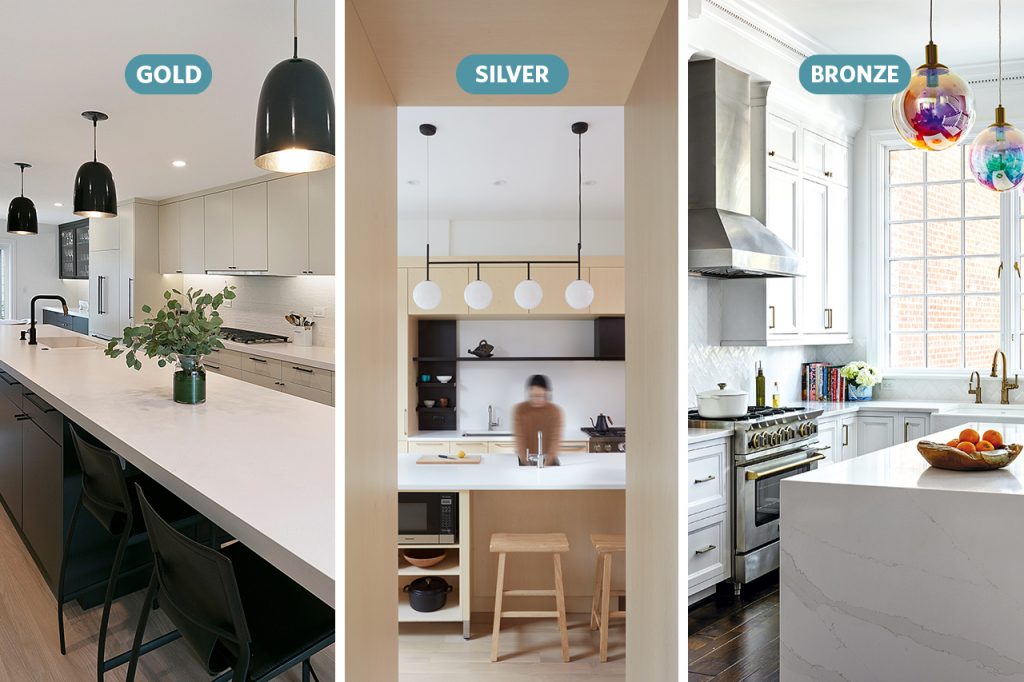
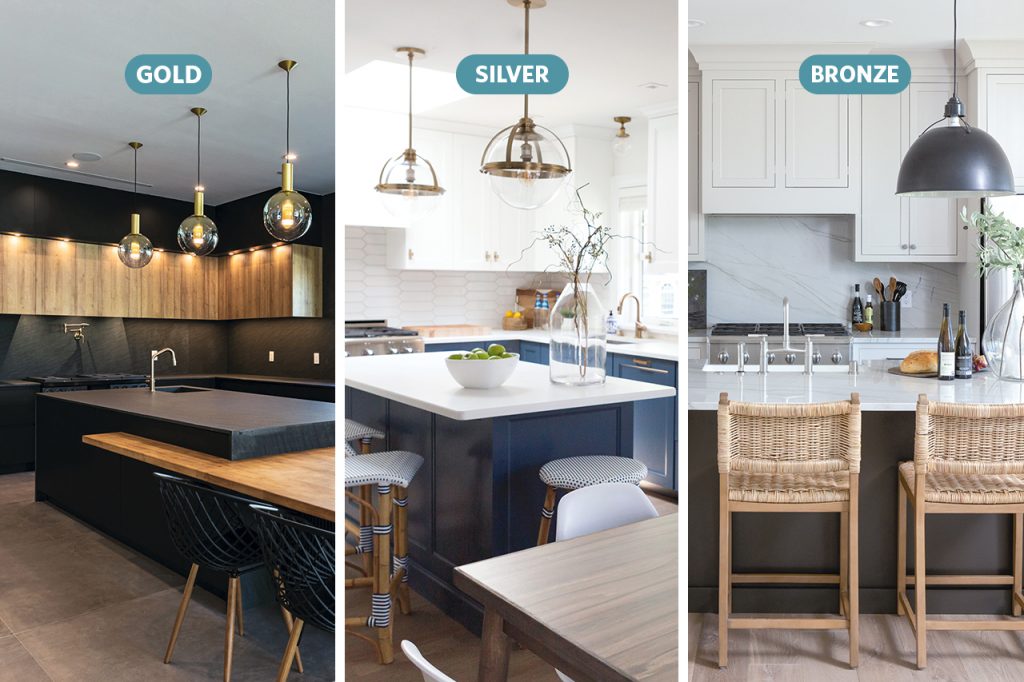
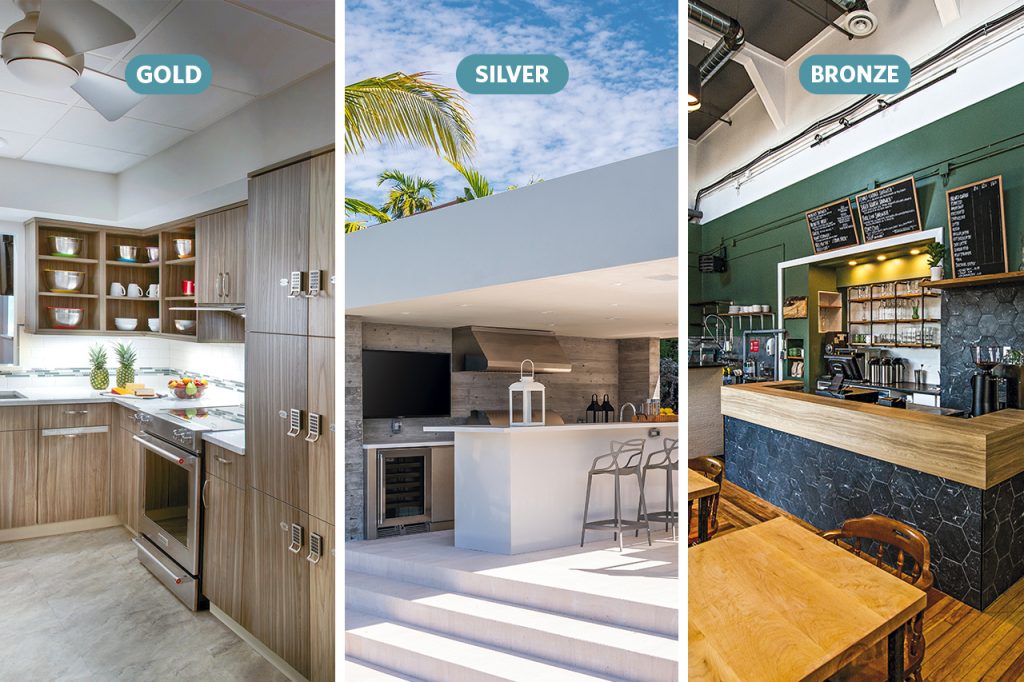
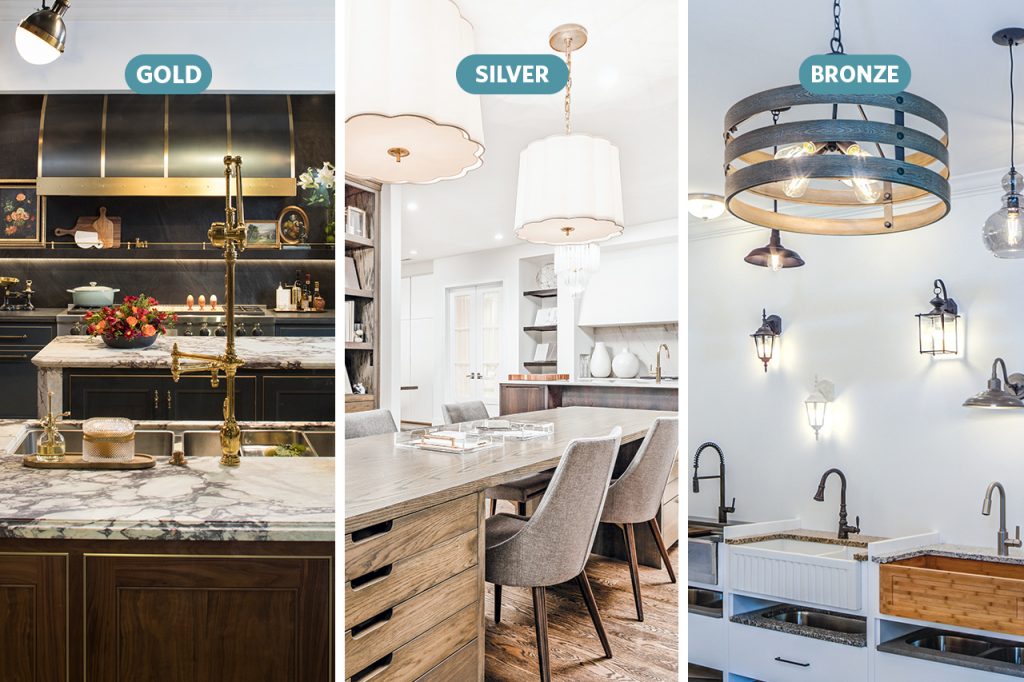
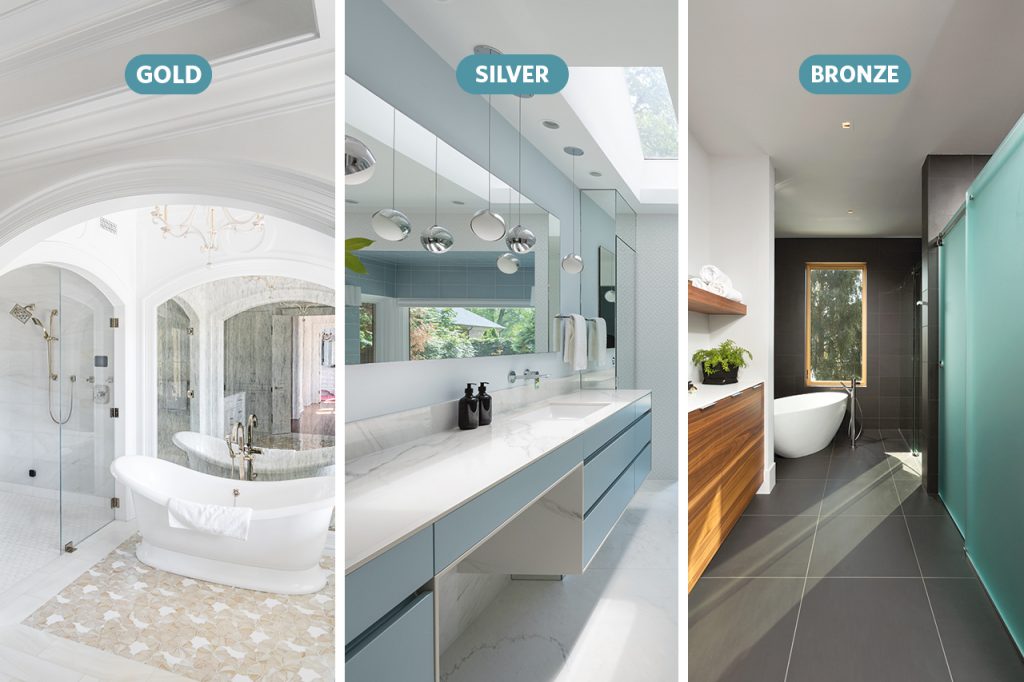
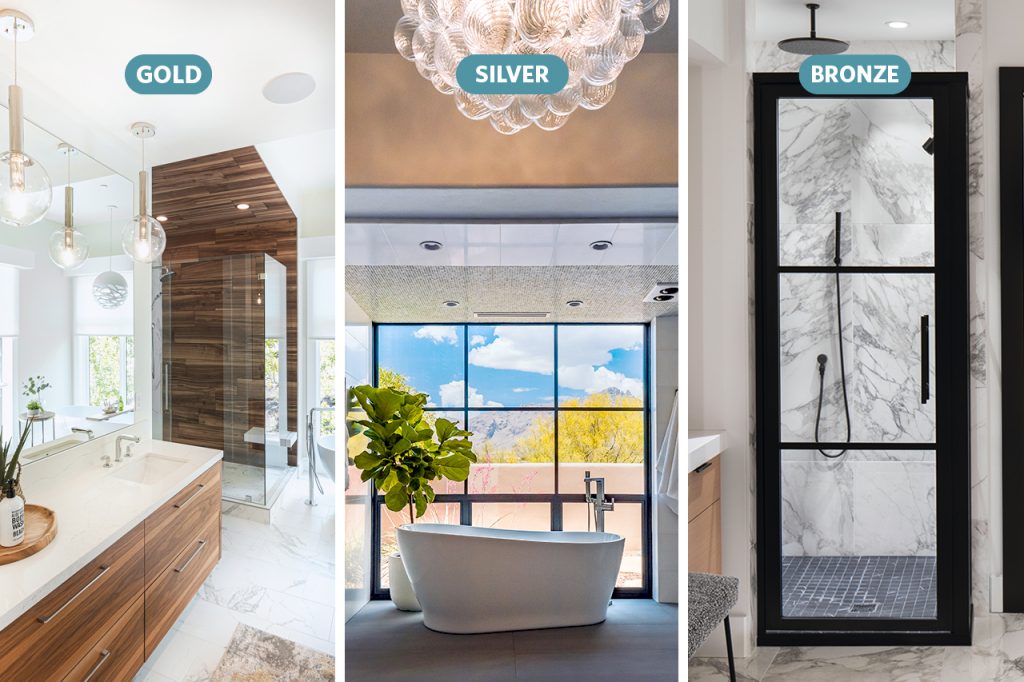
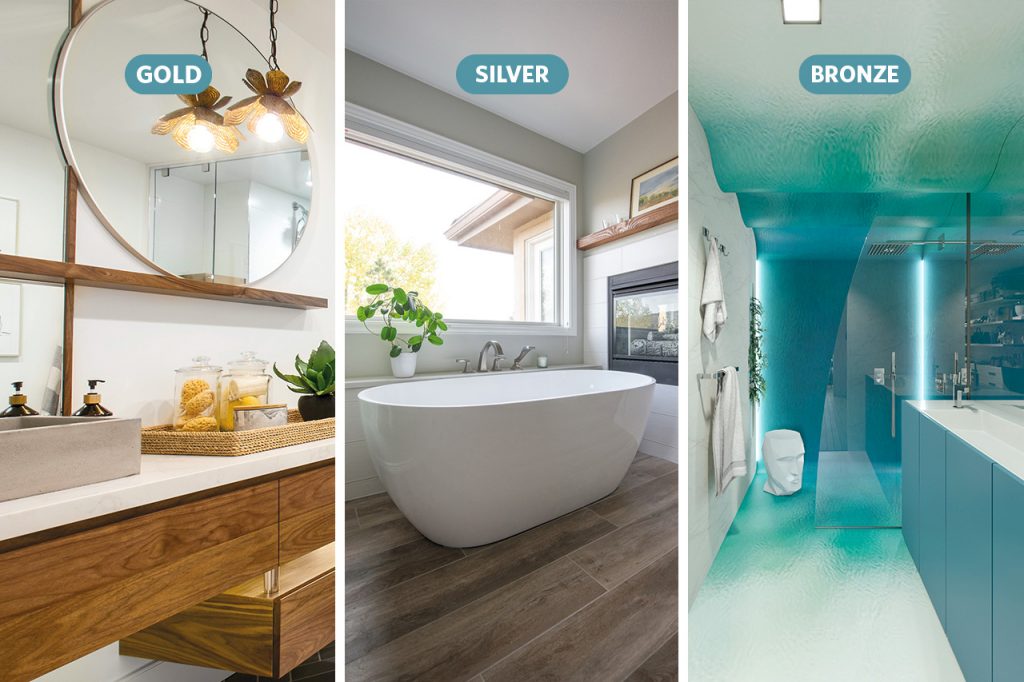
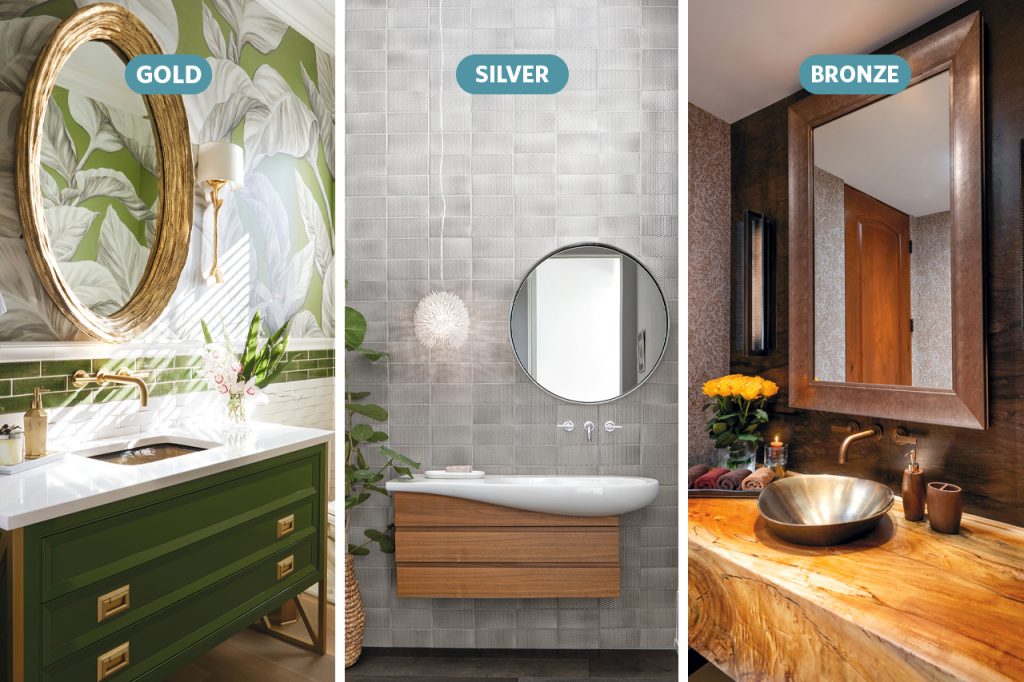
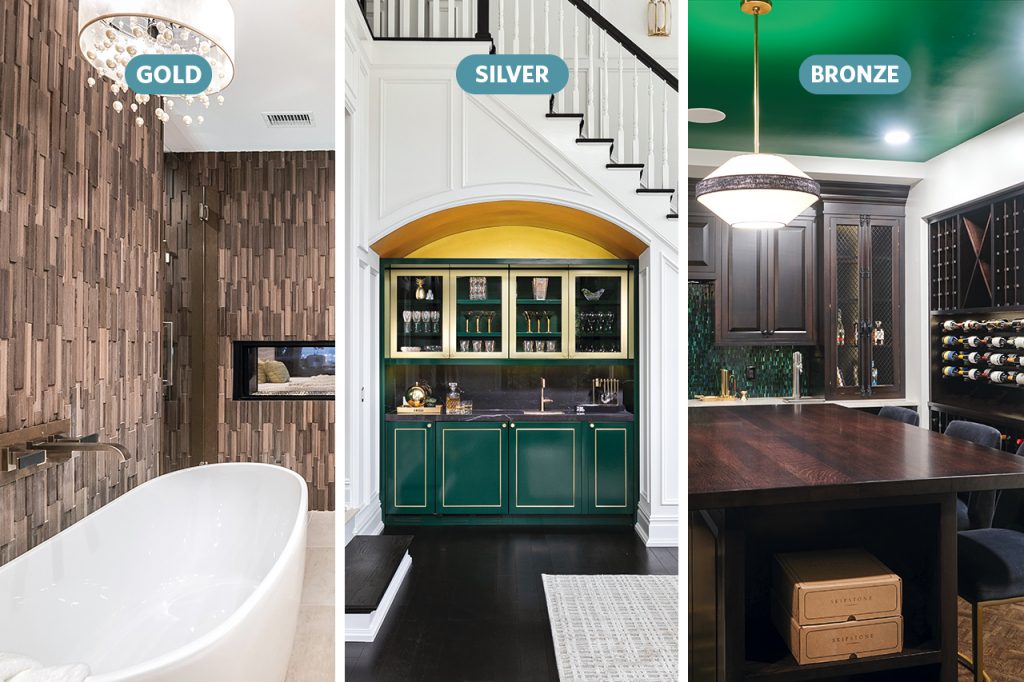
The post 2021 Award Winners appeared first on Kitchen & Bath Design News.
Plain & Fancy Expands to Western U.S.
SCHAEFFERSTOWN, PA — Plain & Fancy Custom Cabinetry has officially entered the western U.S. market. This is the first official expansion of territory for the PA-based manufacturer in 10 years.
“We are happy to be able to fulfill the demand for Plain & Fancy product in these territories, which have been steadily requesting our cabinetry for many years,” noted Brian Yahn, sales manager for Schaefferstown, PA-based Plain & Fancy.
The manufacturer, which has been doing business mainly east of the Mississippi river for 52 years, has entered into agreements with two independent representative firms to cover much of the western U.S.
Plain & Fancy has partnered with Bluewater Building Products to represent its products in the Mountain West region, including the states of Montana, Idaho, Wyoming, Utah, Colorado, Arizona and New Mexico. It has also partnered with Infinity Sales Force to represent the company’s products in California, Nevada and Texas.
The post Plain & Fancy Expands to Western U.S. appeared first on Kitchen & Bath Design News.
Pandemic Sparks Kitchen Renovation
Los Angeles — When Shalena Smith, owner of Shalena Smith Interiors and Gaga Designs, purchased her Mediterranean-style home 17 years ago, she and her husband had a budding family life with a two-year-old daughter and another on the way. Before moving into their Los Angeles, CA, residence, they did a complete remodel, which also included the kitchen.
“At the time, trending colors were very dark,” she says, referencing the burnt orange and deep brown hues that were joined by faux paint techniques and Venetian plaster walls. “I also made a mistake that I now tell my clients never to make…making defining decisions before living in a house. It wasn’t until we moved in that I realized I have a dark house without a lot of windows, especially in the kitchen where I now had dark brown cabinets streaked with multiple colors, which was another trend at the time.”
Smith fast forwarded through years of growing her family, as well as an interior design business that includes a roster of celebrity clientele such as Mariah Carey, Sean Combs, Heidi Klum, LL Cool J, Tamara Mowry Housely and Mark Paul Gosselaar, to name a few. Then came the realities of 2020. One of Smith’s daughters was a high school senior, the other was in college. Due to the pandemic, the entire family of four was living and working at home…full-time in a dark, outdated kitchen.
“During the stillness of the pandemic and lockdown, I realized that our kitchen just didn’t function in a way that met our needs anymore,” she says. “I had time to think about our lifestyle and how we used the space. I saw that the kitchen is the heart of our family and that it was time for a change.
“I also realized that I could practice my craft in my own home,” she continues. “As designers, we’re all busy, and it is challenging to be our own client, but we deserve to treat ourselves. I think it’s important that our homes are a reflection of what we do…and they should inspire us every day.”
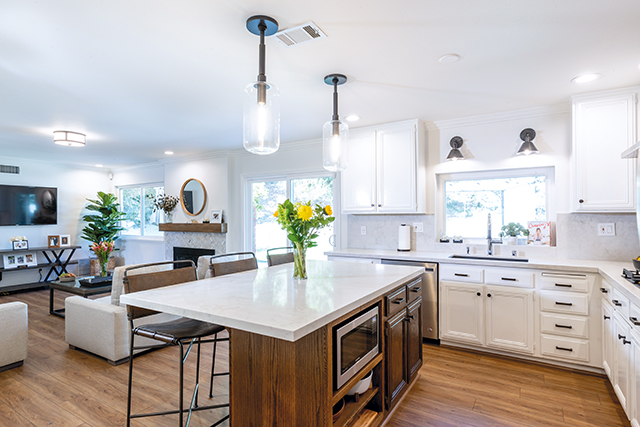
To accommodate her budget, Smith repurposed the peninsula cabinetry for the island, combining the 36″ door/drawer base cabinet with a new 24″ open-shelf cabinet that would enable her to remove the microwave from the countertop and house it in the island.
Personal island Café
As an advocate for organization, functionality and safety before aesthetics, the designer focuses on incorporating elements that complement a lifestyle, rather than on what is trendy or popular at the moment. For her family, that meant removing the existing peninsula and replacing it with an island where the girls could do homework and Smith could entertain family and friends.
“I could only ever fit two stools at the peninsula,” she says. “The girls sat in the stools while I stood up and my husband sat at a nearby small table. I wanted all four of us to be able to sit together, and I wanted to be able to have a party and set out a food spread. Now, my girls affectionately call the new island their own personal café and it has become a great place for family time.”
To accommodate her budget, Smith repurposed the peninsula cabinetry for the island, combining the 36″ door/drawer base cabinet with a new 24″ open-shelf cabinet that would enable her to remove the microwave from the countertop and house it in the island, which was another dream for her new kitchen. While Smith had hoped to replace the tile floor as a second phase of the project, running power to the island for the microwave ultimately damaged more tiles than what Smith had stashed away from the original remodel, so she had to move to plan B, incorporating commercial-grade luxury vinyl tile (LVT) that resembles hardwood.
“We were able to lay it right over the existing tile, using it as a subfloor,” she says. “I also love the vinyl’s wood look. While some clients like hardwood, between our kids and pets, we needed something that was waterproof and scratch proof.”
The designer was also cognizant to size the island with large enough aisleways to be ADA compliant.
“We are thinking about retiring in this home, so we wanted to have enough room for a wheelchair or walker,” she notes. “I’ve also heard horror stories about people not having enough room to pull out appliances when they stop working…or if you need to paint behind them!”
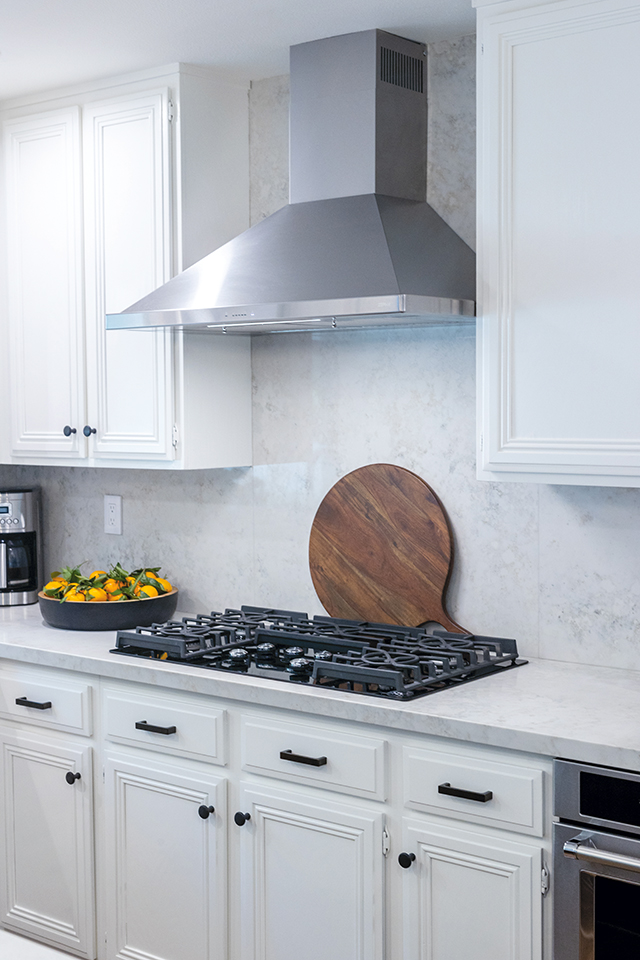
Choosing quartz as the island top checks both boxes for function and aesthetics, with its ease of maintenance meaning no worry about spills. Smith loves the quartz she used so much that she chose to repeat it as the backsplash throughout the entire kitchen, giving it focal-point status above the cooktop and behind the ventilation hood.
Checking Both Boxes
Choosing Vadara Quartz Surfaces’ Marbella quartz, fabricated by Planet Stone, as her island top checks both boxes for function and aesthetics. Functionally, its versatility and ease of maintenance means she needn’t worry about spills.
“As an interior designer I see so many different beautiful natural stones, including marble,” she says. “But I know my life couldn’t handle marble. I love my kitchen, but I don’t want to
be a slave to it. I can’t continually care for marble. Even now, I’m looking at my kitchen with spilled juice on the counter. We also just had a prom party where ice cream cake was melting onto it. If I had a porous surface, those ‘events’ could ruin it. Instead, the quartz gives me the look of marble, without the maintenance.”
This particular quartz color also matches the aesthetic goal Smith had envisioned for the space.
“It’s more of a cloudy pattern, without harsh veining,” she indicates. “It was important to me to have an updated modern kitchen, but I needed materials that matched the more traditional/Mediterranean vibe of my home, and a more prominent veining pattern would have been too modern. Plus, the grays, golds, browns and whites all blended together to tie in with my white perimeter cabinets, stained island and brown floor. People are constantly asking if it’s real stone!”
Smith loves the quartz so much that she chose to repeat it as the backsplash throughout the entire kitchen, giving it focal-point status above the KitchenAid cooktop and behind the Zephyr ventilation hood. While the designer kept her original perimeter cabinetry – giving it new life via a fresh coat of Dunn-Edwards’ Whisper paint and new Pottery Barn hardware – she removed the cabinetry above her previous undercabinet ventilation hood to give the quartz more opportunity to shine.
“I didn’t want anything to fight against the quartz,” she says. “I wanted it to be the primary focus in the space. Using it as the backsplash that goes to the ceiling really transformed the entire kitchen.”
Kitchen ‘Earrings’
While the quartz in large part steals the show in Smith’s new kitchen, she also attributes new lighting as a game-changer.
“People often think they can do a remodel without changing the lighting,” she says. “But lighting has so much to do with how welcoming a space is, and how it looks during the day and at night. It can also affect how large a space looks.”
Originally, Smith had a few recessed can lights and a flush-mount ceiling light to illuminate the space. During the remodel, she reconfigured the can lights and added two large Hudson Valley Lighting pendant lights above the island and a pair of complementary Hudson Valley sconces above the Blanco Precis Silgranit Anthracite sink, which is accented with a Graff Perfeque pull-down faucet that offers a modern mix of polished chrome and black.
“Sometimes it’s go big or go home,” she says in reference to the pendant lights. “If you have the room, adding large pendants above an island can actually make the ceiling seem higher. The pendant lights, and the hood vent, are also like a pair of great earrings that add subtle sophistication to the space. You can have a great outfit, but if the earrings aren’t right, the outfit is ruined.” 
The post Pandemic Sparks Kitchen Renovation appeared first on Kitchen & Bath Design News.
Did you miss our previous article…
https://www.culturekitchen.net/?p=118
Adapting to the Post-COVID Era
While the past 15 months have certainly taken a toll on all of us, we can now look ahead to a brighter future. The power of positive thinking helped many people escape the darkness a global pandemic can evoke. It can also help us see the silver lining in what we’ve been through.
How can we adapt? How can we operate our businesses more efficiently? How do we connect with people?
Now that we’ve been through the worst of the COVID-19 public-health crisis, many of us can hit the reset button and get a fresh perspective on best business practices as we enter a new era. Our small family business not only survived but began to thrive as the pandemic progressed. How? It most definitely was not easy. Part of our success is attributed to our unique corporate structure: a service and retail business comprised of a full-service plumbing company and a decorative hardware showroom. But there is more to it than simply that. What follows is what we learned amidst our struggles as we enter a post-COVID Era.
Still a ‘People’ Business
Decorative plumbing and hardware is unique in that it remains a “people” business. Artificial Intelligence and technology may be replacing jobs in other industries, but ours still requires people. There are just too many unpredictable factors and variables that come into play when we’re dealing with a new construction or a remodel project that cannot be solved by an algorithm. As we all know, these types of projects are emotional and, as a result, each one requires a unique human connection.
What has evolved is the way that we connect with people. On The DPHA Drip podcast (Episode: The Consolidation Effect), I had an enlightening conversation with Vik Szemerei, director of strategic accounts at The House of Rohl. One of the biggest takeaways from the conversation involved talking about how the pandemic has forced us to think about how we connect with people and how we operate more efficiently due to the increased value of time.
We both agreed that it makes absolutely no sense to fly across the country to sit in the room with people for a PowerPoint presentation. Save the PowerPoint or strategic talking points for a virtual meeting. When you are meeting with someone, use that time to connect, get to know each other and communicate. So, while our industry is still largely a people business, we can effectively utilize new technology to do better business with people, not to replace people.
Rethinking Events & Showcases
There seemed to be a saturation of events and showcases before the pandemic – so much so that it almost seemed like burnout was inevitable.
Those planning the events and showcases were struggling to figure out how to remain relevant amongst their competition, while those attending were struggling with which events would be worth the investment to attend. This would often lead to disappointment from exhibitors due to low attendance and thus less engagement from attendees because of the low energy.
DPHA adapted by hosting a virtual conference in 2020 and expanding its outreach to a new sector of attendees. Through our relationship with ASID, NKBA and other relevant associations, we extended invitations to architects and designers across North America, yielding hundreds in attendance. Moving forward, DPHA is implementing new strategies to make our annual showcase more accessible by doing the following:
Offering a Hybrid Model: the showcase can be attended virtually or in-person.
Being more design centric: ASID will have their own booth at the conference this year, and several design centric breakout sessions will take place.
Educational Sessions will be available in-person or as part of the virtual event.
The pandemic has forced us to rethink the way we connect with people, which has also forced companies to rethink the way they allocate their market and related budgets.
Company Roles & Structure
Efficiency and adaptation have been common themes, so it is natural for this concept to be fluid in all aspects of business. Companies both large and small have regrouped to think of ways to be more lean, agile and receptive to growth and change.
Technology can also be utilized to improve processes in different areas of your business. For example, our service department switched to a “remote dispatch” model to avoid close contact with one another when public health was uncertain. What we realized in that adaptation was that it increased the efficiency of our technicians’ ability to complete their projects more effectively and expanded our network radius. We can hire technicians out of our service area to reach more potential customers and eliminate the detriment of a commute.
If your bookkeeper, accountant or administrator does not have to be in the office, your hiring pool can expand tremendously. Showroom design consultants could be more accessible and make a greater impact outside of the showroom. Technology and innovation have been critical catalysts for improving processes, increasing productivity and maximizing accessibility.
A New Era
We are all in a unique position to reinvent ourselves in business and as individuals. The loss of human connection will hopefully inspire us to live with more gratitude.
Technology and innovation have helped us discover our potential in business. We now have the opportunity to create a unique new synergy by using technology to make us more connected instead of creating more distance. Businesses can utilize technology to maximize efficiency while placing more emphasis on connecting with the people they do business with. Events and showcases can expand their network while keeping the family culture alive.
With all of these advancements and new insights, we can all move forward together with hope in this post-COVID Era. 
J. Philip Hotarek is operations manager at Lutz Plumbing Inc. and currently serves as board secretary for the Decorative Plumbing & Hardware Association (DPHA). A former NCAA and professional ice hockey player, he spent summers working in the family business as a plumbing apprentice and has been working full time for the company for the past 10 years as a design consultant and plumbing technician. He is currently stepping into a management and ownership role for Lutz Plumbing Inc., whose decorative hardware showroom serves the San Francisco Bay Area.
The post Adapting to the Post-COVID Era appeared first on Kitchen & Bath Design News.
Kitchen of the Month Winner for New Cabinets for July
Kitchen Inspiration by Kitchen Solvers of Fort Lauderdale
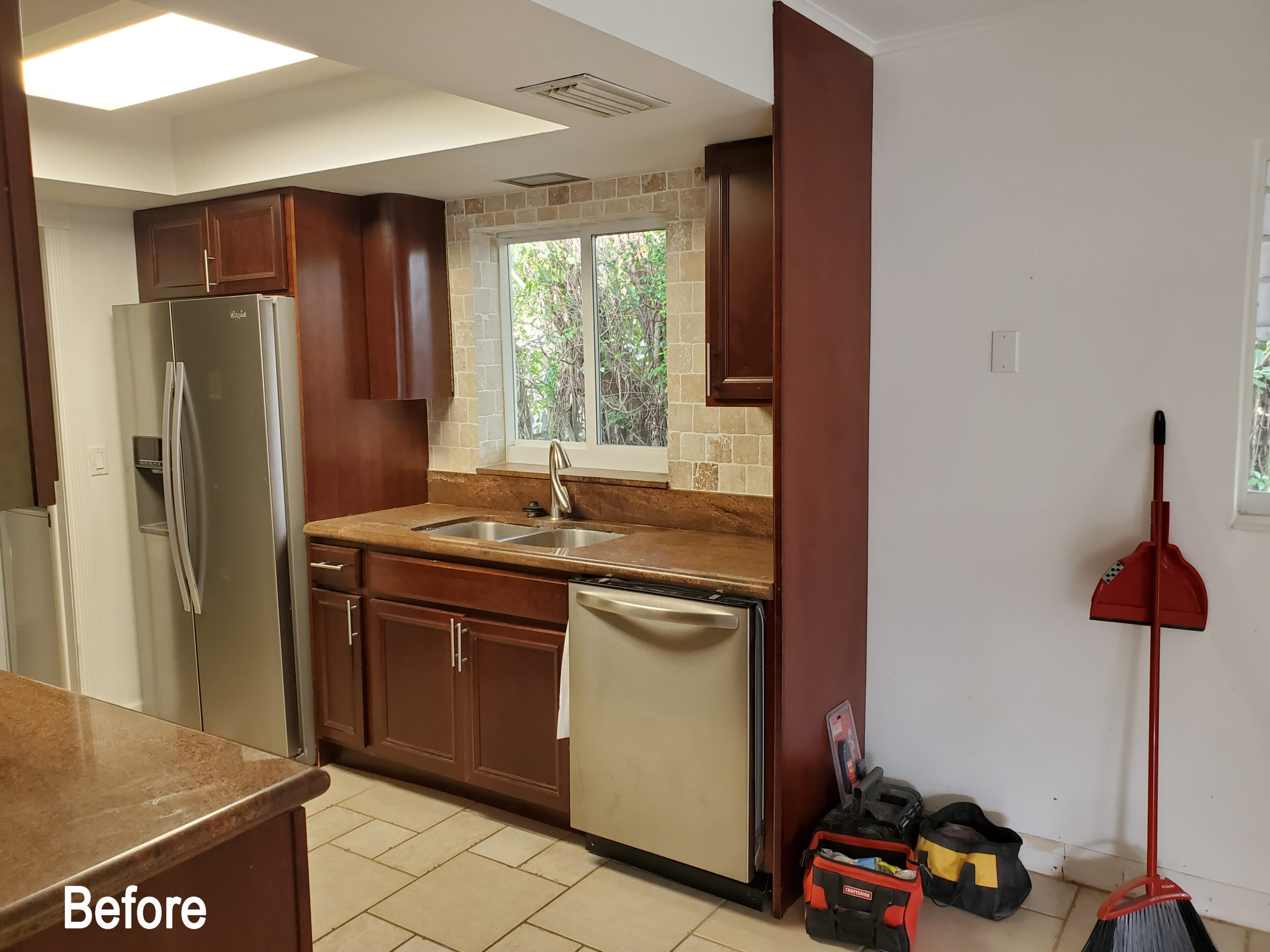
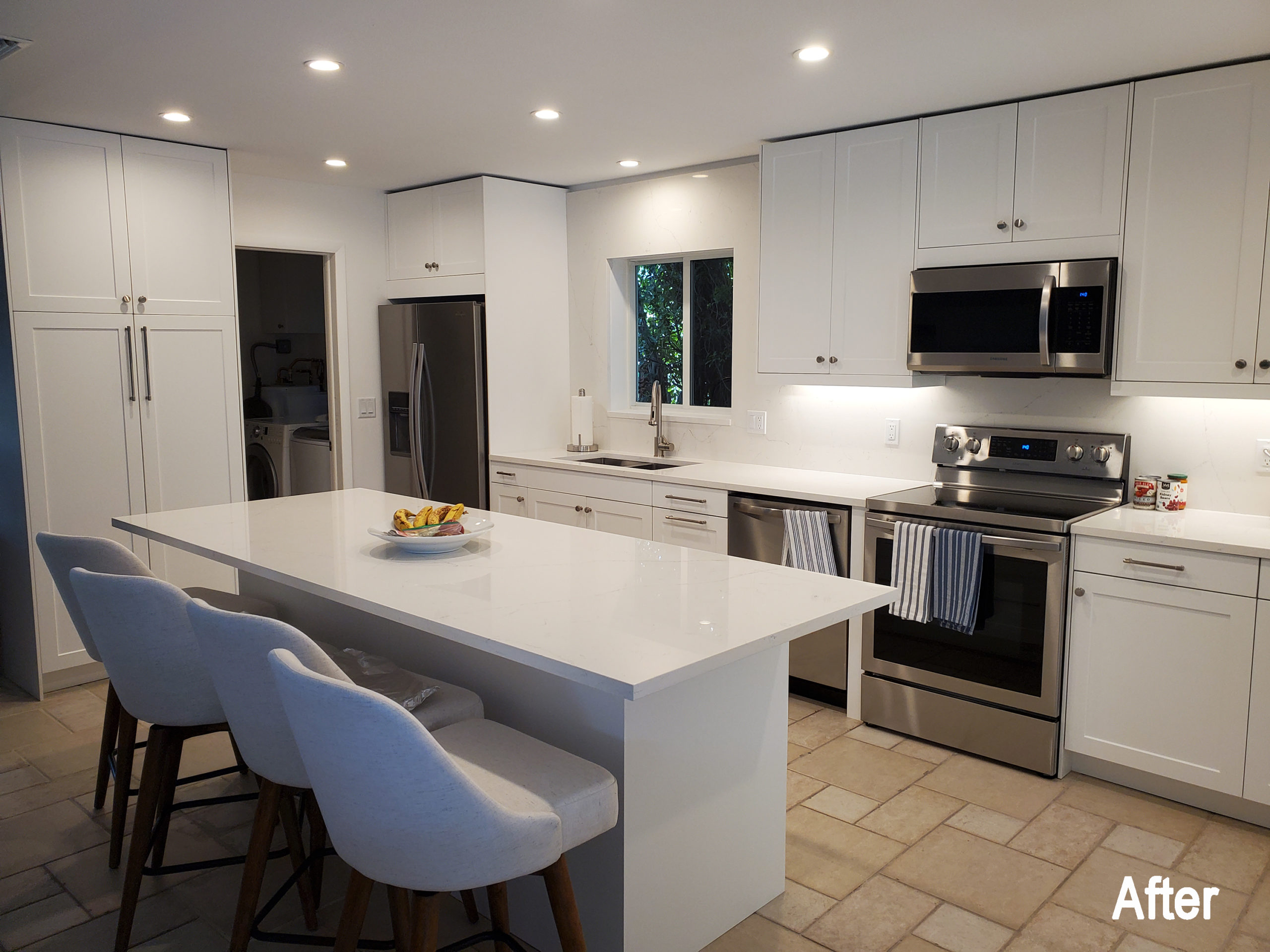
Project Location: Boynton Beach, Florida
Remodel type: New Cabinetry
Type of door style: 1300 Frame
Remodel style: Contemporary
Color: Matte White
Countertop: Quartz
Countertop color: Alabaster White
Backsplash: Alabaster White Quartz
For more information about this project, please visit Kitchen Solvers of Fort Lauderdale’s Blog.
Find a location near you.
The post Kitchen of the Month Winner for New Cabinets for July appeared first on Kitchen Solvers.
Kitchen of the Month Winner for Cabinet Refacing for July
Kitchen Transformation by Kitchen Solvers of Madison
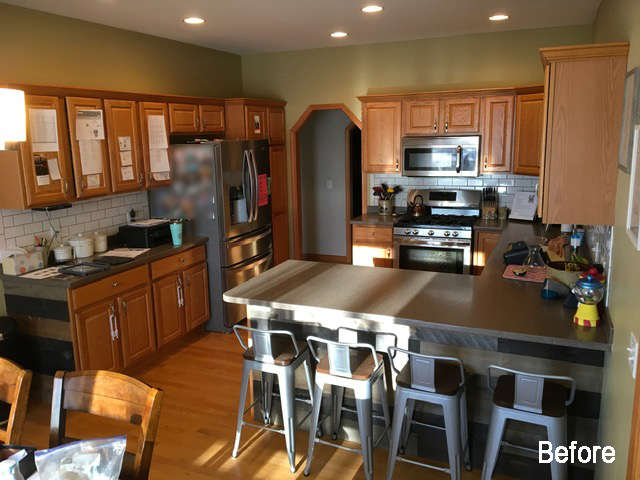
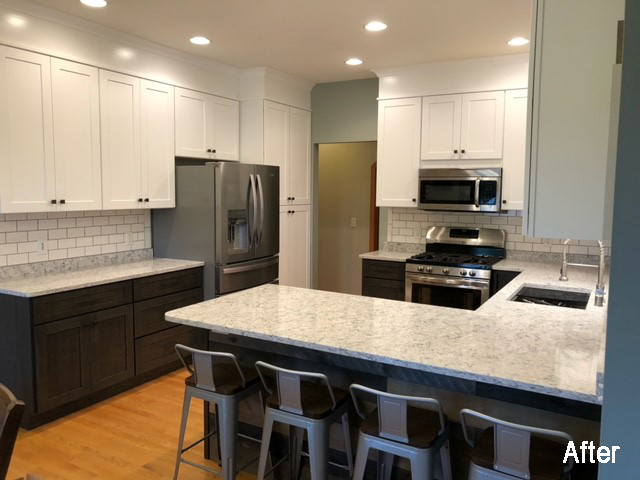
Project Location: Waunakee, WI
Remodel type: Cabinet Refacing and New Cabinetry
Type of door style: Catalina for upper cabinets; Shaker for lower cabinets
Remodel style: Transitional
Color: Polar White for upper cabinets; Red Oak with Nightfall combination stain for lower cabinets
Countertop: Quartz
Countertop color: Silestone Pietra
For more information about this project, please visit Kitchen Solvers of Madison’s Blog.
Find a location near you.
The post Kitchen of the Month Winner for Cabinet Refacing for July appeared first on Kitchen Solvers.
Did you miss our previous article…
https://www.culturekitchen.net/?p=107
A Fresh Start
The wellness trend is taking hold in all aspects of daily life, and also influencing how consumers choose products for their homes. Homeowners can now turn various products – from lighting to appliances to faucets – on and off with the wave of a hand, a touch on their phone or via their voice.
While many of these trends may be very new concepts, the idea of clean air in the home is not. Ventilation has long been the focus of proper design, with attention paid to clearing odors, smoke and steam for easier breathing. In the kitchen, the right kitchen hood – with the appropriate air-clearing capability – is critical to the room’s overall style and function.
Manufacturers have long supplied different options for kitchen ventilation, but today’s additional focus on wellness and air quality have pushed the envelope even further. Many companies have tweaked existing designs, or gone back to the drawing board to bring the latest technology to the masses.
Some of the major trends in kitchen ventilation include:
–Offering a wide range of size choices – from narrow, 24” styles for urban settings to oversized custom hoods for pro-style ranges – are the focus for many manufacturers.
–Black stainless and its many versions, as well as matte black, continue to offer a sophisticated and in-demand alternative to stainless steel.
–Downdraft ventilation, which sits alongside or behind a cooktop, is gaining in popularity, especially in condos and high rises, due to their ductless operation.
–Liners and low-profile designs have been upgraded, delivering powerful performance even when mounted in cabinets or custom designs.
–Color is everywhere, with blues, greens, reds and whites among the favorites, along with a seemingly endless rainbow of options.
–Among the leading technologies being introduced are hoods that communicate with cooktops to adjust automatically to what is being prepared, as well as voice-command and app-controllable features.
The post A Fresh Start appeared first on Kitchen & Bath Design News.
Did you miss our previous article…
https://www.culturekitchen.net/?p=106
Common Corner Cabinet Types and Ideas
Corner cabinets in a kitchen design are almost unavoidable. It’s good to know your options before you start planning.
The post Common Corner Cabinet Types and Ideas appeared first on Superior Cabinets.
Did you miss our previous article…
https://www.culturekitchen.net/?p=105
2021 Best Master Bathrooms $50,000–$100,000
The post 2021 Best Master Bathrooms $50,000–$100,000 appeared first on Kitchen & Bath Design News.
2021 Best Master Bathrooms Under $50,000
The post 2021 Best Master Bathrooms Under $50,000 appeared first on Kitchen & Bath Design News.